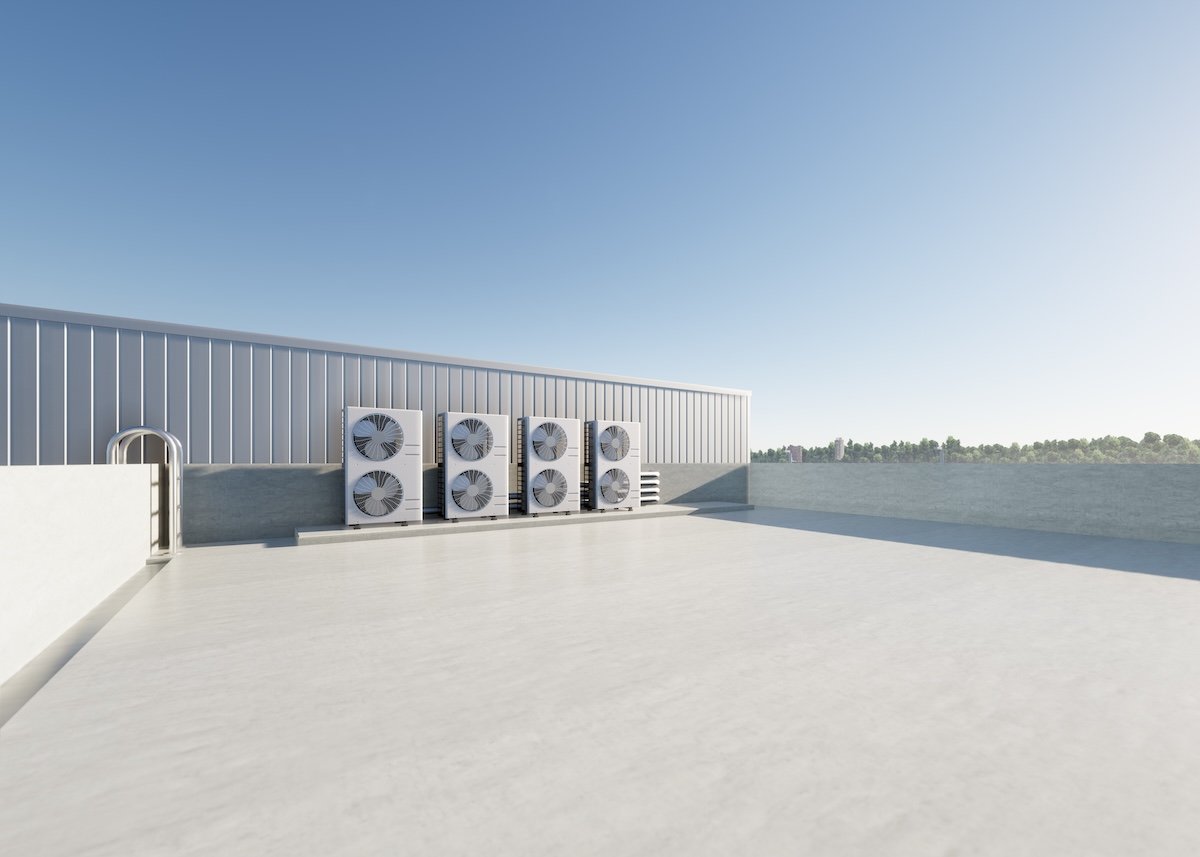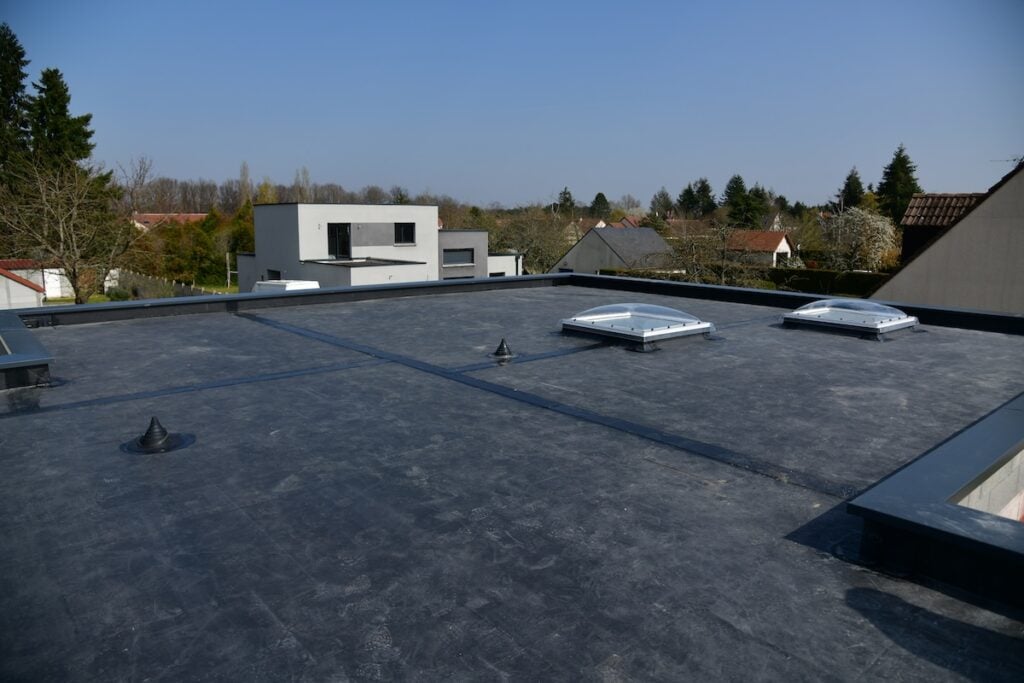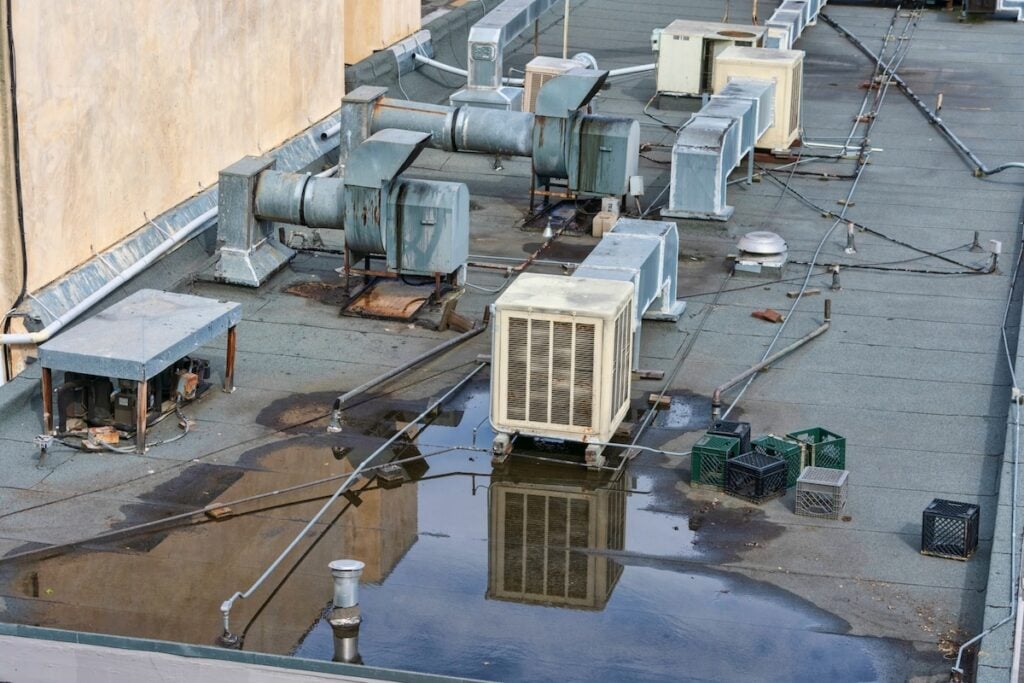
Commercial Flat Roofing Guide: How It Works
When managing a building, understanding your commercial flat roofing system is key to maintaining your property’s performance, safety, and value. Whether you’re a business owner, facility manager, or property investor, the roof is one of your most critical assets—and one of the most overlooked until problems arise.
In this guide, we’ll cover:
- How flat roofing systems are designed and installed
- Common materials used in commercial applications
- Maintenance strategies to extend roof life and prevent costly issues
If you own or manage a commercial building in Texas, this guide will help you make informed decisions about your flat roofing needs.
🤔 What Is Commercial Flat Roofing?
Unlike steep-sloped residential roofs, commercial flat roofs have a low slope (typically between 1/4:12 and 2:12) and are designed for efficient water drainage across a large surface area. These roofs are commonly found on:
- Office buildings
- Retail stores
- Warehouses
- Manufacturing facilities
- Medical centers
- Schools and multi-unit housing
They require specialized materials and techniques that differ significantly from residential roofing systems.

👉 How Flat Roofing Systems Work
Commercial flat roofing systems are built to handle heavy use, HVAC equipment loads, and exposure to harsh Texas weather. Here’s how they’re structured:
1. Structural Decking
The base of the roofing system is typically a steel, concrete, or wood deck that provides structural support.
- Steel decking: Common in large commercial buildings for its strength-to-weight ratio.
- Concrete decking: Used in multi-story buildings for fire resistance and durability.
2. Insulation Layer
Rigid insulation boards are added above the decking to meet energy code requirements and increase efficiency.
- Polyisocyanurate (ISO): Offers high R-value and moisture resistance.
- EPS/XPS foam: Economical options with strong thermal performance.
3. Membrane or Roof Covering
This is the waterproof layer that protects your building from rain, sun, and temperature extremes.
- Fully adhered or mechanically attached: Depending on material type and wind uplift requirements.
- Seams and penetrations: Must be expertly sealed to prevent leaks.
4. Flashing and Edge Details
Critical to prevent water intrusion at walls, parapets, and penetrations like HVAC units or skylights.
- Metal flashing: Provides edge protection and a clean finish.
- Sealants and termination bars: Secure the membrane at connection points.
⭐️ Common Commercial Flat Roofing Materials
Each flat roofing system has unique advantages depending on your building size, use, and budget.
TPO (Thermoplastic Polyolefin)
One of the most popular flat roofing systems in Texas thanks to its cost-effectiveness and energy efficiency.
- Durability: Resistant to UV, ozone, and chemical exposure
- Reflectivity: White surface reduces heat absorption and lowers cooling costs
- Cost: $$ (mid-range)

PVC (Polyvinyl Chloride)
Ideal for buildings with grease or chemical exposure, like restaurants or industrial facilities.
- Strength: Welded seams create a watertight system
- Chemical resistance: Great for rooftop kitchens or labs
- Cost: $$$ (higher-end option)
EPDM (Ethylene Propylene Diene Monomer)
A synthetic rubber roofing membrane known for its flexibility and ease of repair.
- UV resistance: Black color retains heat in colder regions
- Longevity: Often lasts 20–30 years with proper care
- Cost: $–$$ (budget-friendly)
Modified Bitumen
An asphalt-based material reinforced with polyester or fiberglass, often used on smaller buildings.
- Multi-ply system: Offers redundancy and impact resistance
- Installation: Can be torched-down, cold-applied, or self-adhered
- Cost: $$
Built-Up Roofing (BUR)
The traditional “tar and gravel” roof, made from multiple layers of asphalt and felt.
- Durability: Proven track record, often 30+ years
- Weight: Heavier system may require stronger decking
- Cost: $$$
✅ 7 Advantages of Commercial Flat Roofing
Flat roofs aren’t just about function—they offer a variety of benefits to business owners and facility managers.
- Easy Access: Flat roofs allow safe, walkable space for HVAC maintenance, solar panels, or inspections.
- Cost-Effective: Lower upfront material and labor costs compared to pitched systems.
- Energy Efficient: Cool roof systems like TPO or PVC reduce indoor temperatures and HVAC loads.
- Maximized Space: Rooftops can be used for utilities, mechanical units, or green roofing.
- Modern Aesthetic: Clean lines and uniform look for commercial buildings.
- Custom Drainage Options: Designed to manage large volumes of water with internal drains or scuppers.
- Adaptability: Ideal for both new construction and retrofits.
🛠️ Maintenance Tips to Extend Flat Roof Lifespan
While flat roofs are durable, they require regular maintenance to perform their best. Here’s what every commercial property owner should prioritize:
Schedule Biannual Inspections
Spring and fall are ideal times to inspect your roof for:
- Punctures, blisters, or membrane separation
- Flashing damage around penetrations
- Clogged drains or ponding water
Keep the Roof Clean
Debris, leaves, and dirt can block drainage systems and trap moisture.
- Schedule routine cleaning, especially after storms
- Trim overhanging tree branches to prevent buildup
Repair Issues Promptly
Small punctures or open seams can quickly become larger problems.
- Don’t delay minor fixes—water intrusion can damage insulation and decking
- Log all repairs for warranty documentation
Monitor Interior Signs of Damage
Look for interior indicators like ceiling stains, mold odors, or increased humidity in top-floor areas.
- These could suggest a membrane breach or drainage issue on the roof

👍 Flat Roof Repair or Replacement? What to Know
If you’re noticing performance issues with your flat roof, it’s important to know whether a repair or full replacement is more cost-effective.
Choose Repair When:
- Leaks are isolated and membrane is under 10 years old
- Damage is limited to one section or flashing area
- The roof has been well maintained
Cost: Flat roof repairs in Texas range from $500 to $3,500, depending on material, size, and accessibility.
Choose Replacement When:
- The membrane is over 20 years old
- Damage is widespread or the insulation is saturated
- You’ve had multiple repairs in the past 2–3 years
Cost: Full replacement for commercial flat roofing in Texas typically ranges from $6 to $12 per square foot, depending on material and system complexity.
🏢 What to Expect During Installation
If you’re planning a new commercial flat roof installation or replacement, here’s a brief overview of the process:
- Tear-Off (if needed): Old materials are removed and disposed of properly
- Deck Inspection: Decking is checked for damage and replaced if needed
- Insulation Install: Rigid boards are placed and mechanically fastened
- Membrane Application: System is either fully adhered, heat-welded, or mechanically attached
- Flashing and Detail Work: Edges, seams, and penetrations are sealed
- Final Inspection: The contractor verifies installation quality and ensures code compliance
Project timelines typically range from 3 to 10 days, depending on roof size, weather, and complexity.

🤝 Partner With M&M Roofing for Expert Commercial Flat Roofing
If you’re a business or property owner in Texas, your roof is more than just protection—it’s an investment in your building’s long-term success. Understanding how commercial flat roofing works gives you the power to make smart decisions that protect your budget, tenants, and business operations.
At M&M Roofing, we specialize in flat roof systems for retail, medical, industrial, and commercial facilities across Texas. With decades of experience, industry-leading products, and a commitment to quality, we offer full-service inspections, repairs, replacements, and preventative maintenance.
Contact M&M Roofing today to schedule a flat roof evaluation and get a free, customized quote. We’ll help you protect your building with a roofing system built to last.
